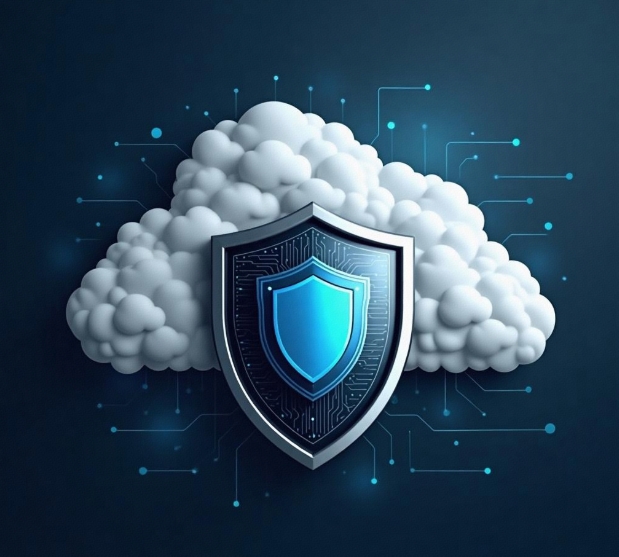Data Security and Privacy Protection in Cloud Computing Applications
- latest articles
- 1.DApp Development & Customization: Merging Diverse Market Needs with User Experience 2.Analysis of the Core Technical System in DApp Project Development 3.How to achieve cross-chain interoperability in Web3 projects? 4.How does the tokenization of points reconstruct the e-commerce ecosystem? 5.How to Set and Track Data Metrics for a Points Mall? 6.What is DApp Development? Core Concepts and Technical Analysis 7.Inventory of commonly used Web3 development tools and usage tips 8.Development of a Distribution System Integrated with Social E-commerce 9.Six Key Steps for Businesses to Build a Points Mall System 10.What is DApp Development? A Comprehensive Guide from Concept to Implementation
- Popular Articles
- 1.Future Trends and Technology Predictions for APP Development in 2025 2.Analysis of the DeFi Ecosystem: How Developers Can Participate in Decentralized Finance Innovation 3.From Zero to One: How PI Mall Revolutionizes the Traditional E-commerce Model 4.DAPP Development | Best Practices for Professional Customization and Rapid Launch 5.Recommended by the Web3 developer community: the most noteworthy forums and resources 6.From Cloud Computing to Computing Power Leasing: Building a Flexible and Scalable Computing Resource Platform 7.Shared Bike System APP: The Convenient Choice in the Era of Smart Travel 8.How to Develop a Successful Douyin Mini Program: Technical Architecture and Best Practices 9.How to Create a Successful Dating App: From Needs Analysis to User Experience Design 10.From Design to Development: The Complete Process of Bringing an APP Idea to Life
With the continuous advancement of information technology and the rapid development of the internet, cloud computing has become one of the core technologies for modern enterprises and individuals in data storage and processing. Whether it's cloud services for large-scale enterprises or personal cloud storage applications, cloud computing has brought us convenience and efficiency. However, the rapid development of cloud computing also comes with severe challenges in data security and privacy protection. How to ensure data security in cloud computing environments and protect user privacy has become a widely focused issue in both industry and academia.
This article will explore data security and privacy protection issues in cloud computing applications, analyze the main threats, existing security technologies and strategies, and propose future development directions and challenges.
I. Challenges of Data Security and Privacy Protection in Cloud Computing
The core feature of cloud computing lies in its provision of computing and storage services through remote servers, enabling users to conveniently access, manage, and process data. However, this characteristic also brings numerous challenges to data security and privacy.
Data Leakage and Theft In traditional local data storage methods, enterprise and personal data are typically stored on their own hardware devices, making physical control and access management relatively easy. However, in cloud computing environments, data is stored on remote servers and may be shared by multiple users, increasing the risk of data leakage. Hacker attacks, malicious actions by insiders, or management negligence can all lead to the exposure of sensitive data.
Data Loss Data storage in cloud computing environments often relies on multiple distributed servers. When certain servers fail or are attacked, the risk of data loss significantly increases. Especially in cases where reasonable backup and disaster recovery measures are not implemented, data loss can have catastrophic impacts on enterprises.
Loss of Data Control Cloud computing service providers typically hold the storage and management permissions for customer data, making it difficult for enterprises and individuals to fully control their own data. Even if cloud service providers offer security measures such as encryption and access control, customers may still face risks of not fully understanding their data storage and processing processes, especially during cross-border data transfers.
Cross-Border Data Transfer and Legal Compliance Issues Cloud computing services often adopt distributed architectures, meaning data may be stored in different geographical locations. In such cases, cross-border data transfer becomes an issue that cannot be ignored. Different countries and regions have varying legal regulations and data privacy protection policies, posing legal compliance challenges for the security and privacy protection of global cloud services.
Isolation Issues in Multi-Tenant Environments The multi-tenant architecture of cloud computing allows multiple users to share the same physical hardware resources, which may lead to data leakage or malicious access between different users. In multi-tenant environments, ensuring data isolation and preventing malicious users from accessing others' data is a key issue in cloud computing security.
II. Data Security Technologies and Strategies in Cloud Computing
To address the challenges of data security and privacy protection in cloud computing, industry and academia have proposed a series of technologies and strategies. These technologies cover various aspects such as data encryption, access control, identity authentication, audit logs, backup and recovery.
Data Encryption Data encryption is a fundamental technology to ensure secure transmission and storage of data in cloud computing environments. Encryption technology can effectively prevent data from being stolen or tampered with during transmission. For sensitive data stored in the cloud, strong encryption algorithms (such as AES, RSA) are used to ensure that even if the data is illegally accessed, it cannot be decrypted.
Additionally, end-to-end encryption technology is a common protection method that ensures data security during transmission, thereby preventing man-in-the-middle attacks. Cloud service providers typically offer encryption services, but some enterprises and individuals may prefer to manage encryption keys themselves to ensure higher security.
Access Control and Identity Authentication Access control mechanisms are one of the cores of cloud computing data security. By establishing strict access control policies, unauthorized personnel can be effectively prevented from accessing sensitive data. Common access control technologies include Role-Based Access Control (RBAC), Attribute-Based Access Control (ABAC), etc.
Identity authentication technologies (such as multi-factor authentication, single sign-on, etc.) can ensure the authenticity of user identities, further enhancing data security. Multi-factor authentication, especially identity authentication systems that combine passwords, fingerprints, SMS verification codes, and other verification methods, can effectively prevent security issues caused by password leaks.
Data Backup and Disaster Recovery Data backup and disaster recovery are effective means to prevent data loss. In cloud computing environments, cloud service providers typically offer regular backup and data recovery services, but enterprises and users should also strengthen self-management to ensure data can be quickly recovered in the event of a disaster.
For example, through distributed backup technology, data can be backed up to multiple geographically dispersed servers. Even if one server fails, data can still be recovered from other servers. Additionally, disaster recovery services (DRaaS) provided by cloud service providers can ensure rapid business recovery in the event of natural disasters or technical failures.
Auditing and Monitoring Cloud computing platforms need to implement detailed auditing and monitoring of all data access, operations, and management. Through log recording, access auditing, and other means, administrators can monitor data usage in real-time and promptly identify potential security risks or violations.
Audit logs can help enterprises trace the source of problems when data leaks or other security incidents occur, enabling effective response measures. Monitoring systems can also help identify abnormal activities, automatically trigger alerts, and reduce human oversight.
Data De-identification and Anonymization Data de-identification and anonymization technologies can effectively protect user privacy, especially when processing large amounts of sensitive data. De-identification technology removes or replaces personal identifiers in data, ensuring that user privacy is not leaked during analysis and processing. Anonymization further ensures that even if data is accessed or leaked, it cannot be traced back to specific individuals or organizations.
In certain fields, such as healthcare and financial services, de-identification and anonymization have become standard operating procedures for data processing, complying with relevant regulations and privacy protection requirements.
III. Future Development Trends in Cloud Computing Data Security and Privacy Protection
With the continuous development of technology, cloud computing security and privacy protection technologies are also constantly innovating. The following are several possible future development trends:
Application of Artificial Intelligence and Big Data in Security Artificial intelligence (AI) and big data technologies are gradually being applied in the field of cloud computing security. For example, through machine learning algorithms, cloud service platforms can detect and identify security threats in real-time, automatically analyze abnormal behaviors, and take response measures. Additionally, big data technology can help cloud service providers analyze massive amounts of data to discover potential security vulnerabilities and privacy leakage risks.
Privacy Computing and Homomorphic Encryption Technology Privacy computing technology enables computation on encrypted data on cloud computing platforms, avoiding the need to decrypt data and expose it to cloud service providers or other third parties. This technology allows data analysis and processing without leaking data privacy. With the development of homomorphic encryption technology, the capability of data privacy protection will be further enhanced.
Application of Blockchain Technology Due to its decentralized and tamper-proof characteristics, blockchain technology is increasingly being applied to the security and privacy protection of cloud computing data. Blockchain can provide a trustless verification mechanism for cloud computing, ensuring data authenticity and integrity, and offering users greater control.
Compliance and Gradual Unification of International Regulations With the increasing global awareness of data privacy protection, more and more countries and regions are introducing relevant laws and regulations. For example, the EU's GDPR (General Data Protection Regulation) and the US's CCPA (California Consumer Privacy Act) provide clear legal frameworks for data privacy protection. In the future, with strengthened international cooperation, the legal compliance of cross-border data flows will be better guaranteed.
IV. Conclusion
While cloud computing brings convenience and efficiency, it also presents severe challenges in data security and privacy protection. To ensure data security and privacy protection on cloud computing platforms, technological innovation and legal improvements are indispensable. By continuously strengthening security measures such as data encryption, identity authentication, and access control, and combining them with emerging technologies like artificial intelligence, big data, and blockchain, we can effectively prevent security risks in cloud computing applications and protect user privacy. With technological advancements and enhanced global cooperation, the security and privacy protection of cloud computing will continue to improve, providing users with safer and more reliable services.
-

Applications and Challenges of Cloud Computing in the Internet of Things (IoT)
With the continuous advancement of information technology, cloud computing and t···
-

Integration of Cloud Computing and Artificial Intelligence: Enhancing Intelligent Applications
With the rapid advancement of technology, cloud computing and artificial intelli···
-

Data Security and Privacy Protection in Cloud Computing Applications
With the continuous advancement of information technology and the rapid developm···

 Blockchain
Blockchain












